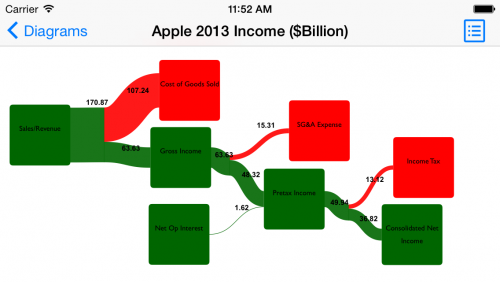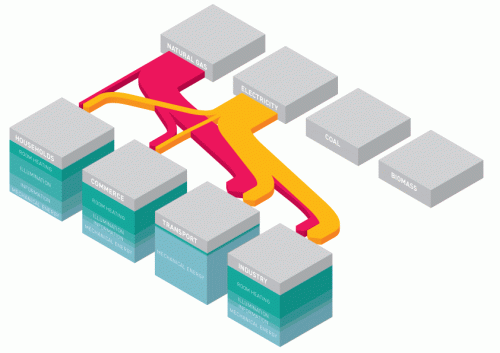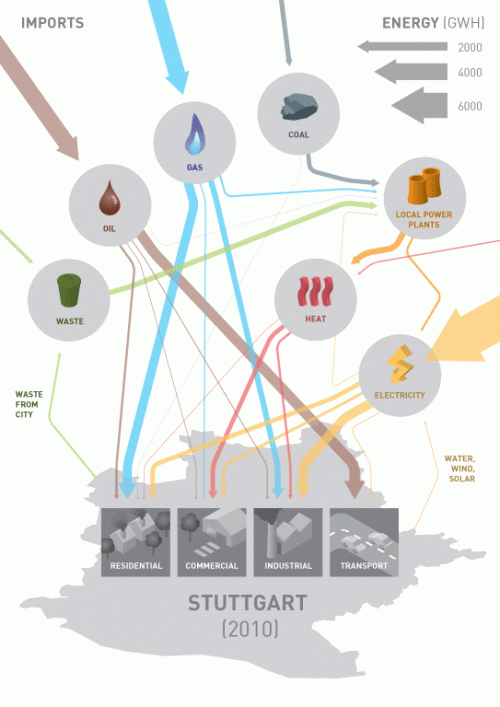An English-language publication ‘A Practical Guide to Energy Efficiency in Production Processes’ published by the Ministry of Economics, Energy, Transport, Urban and Regional Development of the federal German state Hesse (PDF here) describes a structured approach and methodological toolbox to increase energy efficiency in large manufacturing companies. It also contains practical recommendations.
The below Sankey diagrams are based on data from a pilot implementation (“model project”) at a plastics manufacturer.
This is the Sankey diagram for the energy consumption (electricity and gas) in the existing (baseline) scenario
… and for one of the alternatives assessed in the project:
In this alternative scenario, heat is produced from natural gas rather than from electricity, thus reducing transformation losses. Heat recovery measures are also implemented. Flow values are in MWh per year for a given average production volume.
A second alternative scenario with trigeneration is also evaluated (see pp. 43-45 in the report) and potential cost savings and payback time are discussed.
From a design perspective the Sankey diagrams are quite okay, well structured. Some flaws can be noted in arrow segments that run diagonally, where the width of the arrow is not maintained. Overall energy supply and consumption are not shown in the diagram, but only individual values.





